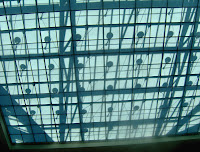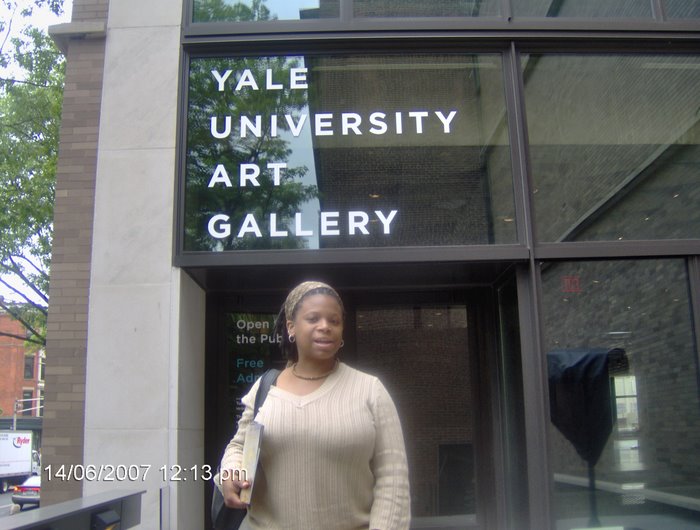








Wadsworh Athenum Museum of Art
Frederick Lord Leighton was born on December 3, 1830 in Scarborough. English painter and sculptor, He was the son of a physician. Sir James Leighton was his grandfather, also a physician, was long resident at the court of St. Petersburg. Frederick Leighton was taken abroad at a very early age. In 1840 he learned drawing at Rome under Signor Meli. The family moved to Dresden and Berlin, where he attended classes at the Academy. In 1843 he was sent to school at Frankfurt. In 1844 he went with his family to Florence, where he decisded to be an artist. There he studied under Bezzuoli and Segnolini at the Accademia delle Belle Arti, and attended anatomy classes under Zanetti; but he soon returned to complete his general education at Frankfurt, receiving no further direct instruction in art for five years.
Much of Leighton's art reflects his fundamental reserve. He was said to be not a man who felt the need to communicate his inner feelings or his experience of life through the medium of art; nor was he an artist capable of moving an audience emotionally. None the less, it is the case that Leighton cared passionately about the purpose which he served; which was that it should strengthen and inspire by the function of an abstract beauty essential in the harmonious arrangement of color and line.
The formal qualities of his art were essentially more important and powerful than its capacity to inform an audience. His strength lay in his extraordinary visual sense and in his capacity to compose in a way which was both decorative and symbolically informative; he knew how to arrange cooler and texture with sumptuous effect; and he represented the external world with a degree of naturalism which pleases the eye without falling into the trap of mere duplication of reality. Leighton's art, which might at first seem dry and dependent upon erudite interpretation, is in fact sensuous and even passionate.
Frederic Leighton had an unusual talent; as a painter this is familiar in his works, from his large-scale Academy pictures to his highly personal oil studies and landscapes. This may have something to do with his upbringing and academic art education in various parts of Europe. Leighton had a more sophisticated understanding of aesthetics than almost any of his British contemporaries. His career he was closely involved with the Royal Academy; his most important pictures were exhibited there, and were generally met with an passionate response. He succeeded Sir Francis Grant as President of the Royal Academy in 1878, and despite the break that had been caused in the area of painting by the beginning of the Grosvernor Gallery in 1877, he himself was thoroughly impressive a figure to rise above the divisions and rivalries of the period.
Leighton's greatest paintings are mythological subjects or scenes from ancient or Biblical history. Unlike many of his contemporaries he understood the true spirit of classicism in painting and therefore did not rely on mere archaeological reconstruction, but rather created timeless settings of simplicity and great visual strength. Nothing conflicts with, or distracts from, the physical or emotional drama which is the subject of the picture. Leighton is arguably the greatest of High Victorian painters. Leighton's life was throughout marked by distinction, artistic and social.
Frederic lord Leighton painted Hercules Wresting with death for body of Alcestis in 1871. This painting is oil on canvas. Leighton was an English painted and sculptor. His work illustrated historical, biblical and classical subject matter.
According to Greek mythology, Alecestis wife of Admetus was will to sacrifice herself so that her husband, who had angered Artemis, could live. Hercules was a guest at Admetu’s place at the time of his wife’s death, he goes after death and wrestles with him for the body of Alcestis and wins her back.
This painting was made for secular reasons. This painting exhibits several meanings. People who are in the left corner are confused and grieving the death. They are comforting each other. The sit thing that drew me to the painting was the struggle that Hercules uncounted in the far right corner. After doing my research I was compassionate for Hercules how he shoed graduate in getting his wife’s’ life back. His face was not shown but I could almost feel his pain.
Important links: http://music.musictnt.com/biography/sdmc_Frederic_Leighton
http://en.wikipedia.org/wiki/Fredericleighton




2 comments:
Ouch! You can't lift so much, not cite it and call it yours.
From Victorian web...
It must be accepted that much of Leighton's art reflects his fundamental reserve. He was not a man who felt the need to communicate his inner feelings or his experience of life through the medium of art; nor was he an artist capable of moving an audience emotionally. By comparison with some of his more forthcoming contemporaries, most notably Edward Burne-Jones, he seems cold and unfeeling. None the less, it is the case that Leighton cared passionately about the purpose which his an served — which was that it should uplift and inspire by the function of an abstract beauty intrinsic in the harmonious arrangement of colour and line.
The formal qualities of his art were essentially more important and powerful than its capacity to inform an audience. His strength lay in his extraordinary visual sense and in his capacity to compose in a way which was both decorative and symbolically informative; he knew how to arrange colour and texture with sumptuous effect; and he represented the external world with a degree of naturalism which pleases the eye without falling into the trap of mere duplication of reality. Leighton's art, which might at first seem dry and dependent upon erudite interpretation, is in fact sensuous and even passionate. — Christopher Newall, The Art of Lord Leighton, p. 140
Frederic Leighton had an extraordinary and far-ranging talent; as a painter this is recognisable in his works, from his large-scale Academy pictures to his highly personal oil studies and landscapes. Perhaps partly as a result of his upbringing and academic art education in various parts of Europe Leighton had a more sophisticated understanding of aesthetics than almost any of his British contemporaries. Throughout his career he was closely involved with the Royal Academy; his most important pictures were exhibited there, and were generally met with an enthusiastic response. He succeeded Sir Francis Grant as President of the Royal Academy in 1878, and despite the schism that had been caused in the sphere of painting by the inception of the Grosvenor Gallery in 1877, he himself was sufficiently august a figure to transcend the divisions and rivalries of the period. Leighton's greatest paintings are mythological subjects or scenes from ancient or Biblical history. Unlike many of his contemporaries he understood the true spirit of classicism in painting and therefore did not rely on mere archaeological reconstruction, but rather created timeless settings of simplicity and great visual strength. Nothing conflicts with, or distracts from, the physical or emotional drama which is the subject of the picture. Leighton is arguably the greatest of High Victorian painters. Only Burne-Jones has any claim to compete with him for this primacy. — Christopher Newall, A Celebration
A.R.A., 1864, R.A. 1868, P.R.A. 1878, subsequently knigh
At the end of the paper when you try to write for yourself, it is almost incomprehensible.
Post a Comment